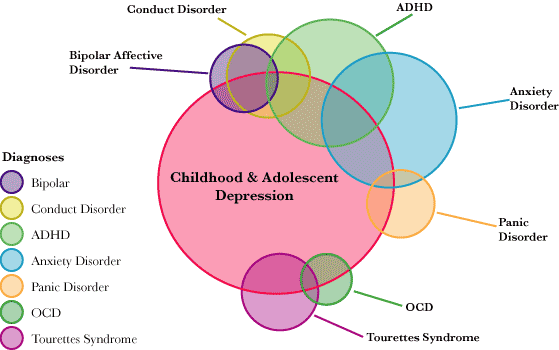 March 15, 2011 in Features Difficult to diagnose, yeast overgrowth can cause severe health problems Jessica Yadegaran Contra Costa Times
March 15, 2011 in Features Difficult to diagnose, yeast overgrowth can cause severe health problems Jessica Yadegaran Contra Costa Times
- Share
Common
candida symptoms
• Gas and bloating
• Lack of energy
• Foggy head
• Forgetfulness
• Nausea
• Skin rashes
Candida resources
• National Candida Center: Information center on causes, symptoms and cleansing and diet treatments for overgrowth ( nationalcandidacenter.com).
• The Candida Diet: A resource on foods to eat and avoid, plus recipes and a discussion forum (thecandidadiet.com).
Brad Crooker’s thirties were stressful. His hectic schedule as an actor and waiter was reflected in his poor diet – lots of muffins, cookies and other refined, on-the-go foods.
In addition to intestinal discomfort, he often found himself nauseous and fatigued. His symptoms were slowing him down.
“I was forgetful. sometimes I almost felt drunk,” recalls Crooker, now 56 and living in Danville, Calif. “I couldn’t function.”
A chiropractor Crooker was seeing for his back told him candida was likely the culprit. Candida is a yeast microorganism that lives in the body’s intestinal tract with other bacteria, such as healthful probiotics.
According to experts, the problem arises when an overgrowth of candida causes an infection, and a multitude of symptoms ensue.
Candida overgrowth is difficult to diagnose. A lack of significant medical studies means most Western doctors don’t recognize it as a condition, except when it appears as a recurring yeast infection in women.
Most sufferers turn to holistic health practitioners who use various techniques, such as measuring yeast levels in stool, to diagnose candida overgrowth and treat it with supplements, antifungal medications and, most important, a change in diet.
Candida diets vary. but the overarching idea is that because yeast is a fermenting organism, you should eliminate foods that convert into alcohol – sugar, certain fruits – and can flourish in the gut as a yeast overgrowth, explains Elson Haas.
Haas, a medical doctor and director of the Preventive Medical Center of Marin, Calif., specializes in integrated medicine and is the author of seven books on health and nutrition.
“In addition to excessive sugars, the overuse of antibiotics and alcohol has caused us to kill off some of the vital microfloral in our intestinal tracts,” he says.
So, the best thing you can do is stop feeding the yeast what it thrives on and replenish with good bacteria, such as yogurt and probiotic supplements.
That means bread is out, too. Haas recommends a diet that is low in sugar, high in protein and includes low-glycemic vegetables.
To kill off an existing candida overgrowth, he uses prescription medications – such as fluconazole, an antifungal – and natural remedies such as castor bean oil extract and caprylic acid.
Crooker used some of those remedies. He switched to a diet of whole foods, including vegetables, yogurt, eggs and fish. And he stopped eating bread, cheese and alcohol.
It took about four months before he felt better.
“I went through withdrawals and started tasting yeast in my mouth at first,” Crooker recalls. “I was starving for those foods I gave up.
“But eventually, I felt better. I had energy, and I could think clearly.”
In some people, the toxins produced by the yeast overgrowth can be absorbed into the body and affect the brain’s function.
“That’s why people complain about feeling foggy and having memory issues,” Haas says. “Some people with candida overgrowth can even produce small alcohol levels in their blood.”
Pubali Ray Chaudhuri didn’t have that symptom, but she did have persistent intestinal bloating and discomfort whenever she ate sugar or aged cheeses.
She discovered her candida overgrowth in 2001, and found help through a naturopath who put her on a yeast-free diet and a round of nystatin, another antifungal medication.
“The diet was restrictive and interfered with a lot of things, like eating out,” says Ray Chaudhuri, 38, of Newark, Calif. “It was difficult, but it worked.”
Even though her overgrowth is gone, most fermented foods, including tofu and mushrooms, still cause her intestinal discomfort. so she sticks to what she calls “a modified version” of the Atkins diet, avoiding refined sugars and carbohydrates.
Not everyone who treats candida overgrowth believes diet is the culprit.
Holistic health practitioner Mitchell Corwin says metal toxicity – specifically, dental amalgam fillings – is the biggest contributor.
“If someone is complaining of symptoms associated with candida, one of the first things I do is look in their mouth,” says Corwin, a practicing chiropractor and kinesiologist for nearly 30 years who has offices in Berkeley and Pleasant Hill, Calif.
“Even one filling is enough to leach mercury into the body and cause heavy metal toxicity,” he says.
Corwin believes people with digestive issues such as lactose intolerance or irritable bowel syndrome are also predisposed to the condition.
In its most severe forms, candida overgrowth can cause leaky gut syndrome, where microbes, undigested food, and waste can pass through an abnormally permeable gut wall, he says.
Most people can find relief by killing the existing overgrowth and avoiding a long list of yeast-ridden foods.
Priscilla Regalado of Richmond, Calif., has been on a candida diet for years. It has helped curb the gas, bloating, nausea and body itching she used to experience.
“I used to be doubled over in pain,” she says.
These days, she avoids most fruits and high-glycemic vegetables, such as carrots and sweet potatoes.
But she has one rule: she comes off the diet during Christmas time.
“Some people choose to stay on those diets all of their life,” Regalado says. “I just can’t do that.”